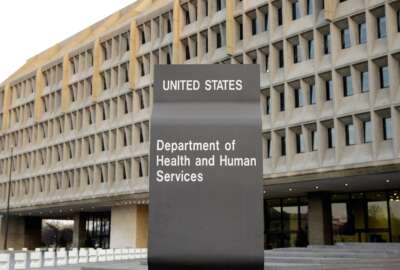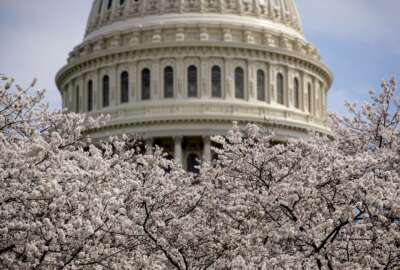Federal highway safety administration slow to give Congress all its reports
The National Highway Traffic Safety Administration is mainly concerned with traffic safety. That mission involves rulemaking. Going back a decade, Congress aske...
Best listening experience is on Chrome, Firefox or Safari. Subscribe to Federal Drive’s daily audio interviews on Apple Podcasts or PodcastOne.
The National Highway Traffic Safety Administration is mainly concerned with traffic safety. That mission involves rulemaking. Going back a decade, Congress asked for 19 reports and 22 rules from NHTSA, but the agency has been slow getting all of this administration out the door. The Federal Drive with Tom Temin got more now from the Director of physical infrastructure at the Government Accountability Office Elizabeth (Biza) Repko.
Interview transcript:
Tom Temin: Ms. Repko. Good to have you on.
Biza Repko: Great to be here.
Tom Temin: And we’re covering this kind of arcane topic because every agency gets these orders from Congress. And you would think that federal rulemaking should be like a natural, often used muscle for an agency. What did you find it NHTSA?
Biza Repko: You’re right, issuing regulations through the rulemaking process is an important tool that NHTSA uses to improve safety for motor vehicles. And it’s really important work because tragically, motor vehicle crashes have been increasing in recent years. About 40,000 people died in 2020. And we took a look at how NHTSA was doing in completing rulemakings that Congress asked them to do. We found that it completed all of the reports, but most of them were late. And it only completed about 25% of the required rulemakings.
Tom Temin: Yeah, so something is stuck in there. They’re in reverse instead of in drive to make a metaphor. So what was the reasoning behind the slowness here?
Biza Repko: Well, we talked to NHTSA officials. And we also talked to regulatory experts about what might be the reasons why they are falling behind here. There were several reasons that were given to us. They could be factors like administration priorities, or the complexity of the issue that they’re working on, or the availability of resources to work those issues.
Tom Temin: Yeah. So let’s talk about the reports for a moment. And you say the administration priorities if Congress has asked for these 19 reports, and in that period of time, we’ve had three administration’s, should that really affect the agency’s efficacy in getting those reports out, even if this administration likes it, and the next one doesn’t?
Biza Repko: Sure, I mean, it certainly is a priority of Congresses for them to put out these reports. And part of the reason why that’s important is because Congress uses the reports in order to conduct its oversight. And to figure out if there’s different policy issues that Congress needs to pursue. There can be a lot of complexity behind doing the reports. And that can be an issue that slows them down. They did complete all 19 of the reports that they were asked to complete, although all but two of them were completed late, from about two months to three years.
Tom Temin: And I guess the question comes up, you don’t just sit down and write a report and sign it. There must be an exhaustive process for creating congressionally mandated reports, I would make the analogy to the authority to operate required for new computer systems, you just don’t develop it and then launch it. Is that true for reports? There’s a formal process?
Biza Repko: That’s absolutely true. There is a formal process that the reports go through. And there’s often a lot of research that goes behind the reports. You know, for instance, NHTSA may be asked what are the key drivers of fatal crashes. And that is a technically sophisticated report to put together. There’s a lot of data and analysis that they need to go through in putting that report out. So it can take some time. They also want to do it right, because it’s important for them to have a quality report because Congress is going to use that report to conduct its oversight and to make policy.
Tom Temin: Right, I could do that in a very short form. The reason of all of these federal crashes is the nuts behind the wheel.
Biza Repko: Well, you know, they have found that crashes have been increasing in the last couple of years. And that’s a sort of an interesting finding, because the miles traveled have been decreasing. So it’s interesting to get behind that number. And NHTSA is trying to do that right now.
Tom Temin: And so all the more important for reports to come out on time because they have a timely factor connected with them.
Biza Repko: Absolutely.
Tom Temin: We’re speaking with Biza Repko. She’s director of physical infrastructure at the Government Accountability Office. And let’s turn to the rulemaking because that does have prescribed timelines in the administrative codes of the United States. And you’ve got 60 days for this and 90 days for that and so on. But then there is that review period before final. Is that where the hang up was coming?
Biza Repko: We found that during the review process, NHTSA tended to follow a schedule, but prior to the review process, they weren’t consistently following a schedule or leading schedule management practices. And by that we mean things like established milestones and sequence your activities and then track back so that you can accurately provide information about the progress that you’re making.
Tom Temin: Because in dealing with the automotive industry, dealing with state and local officials, dealing with road engineering standards bodies, I mean, a lot impinges on understanding traffic. Could it be that they maybe had a little lack of confidence because of pushback and opinion and lobbying even by these various interest groups?
Biza Repko: Well, I really do think it is important to note that rule makings are very complex undertakings. They’re technically complex, they’re legally complex, they can be scientifically complex. And there really isn’t a one size fits all. There’s not a standard length of time in which an agency should be expected to complete a rulemaking. And that is why we made recommendations that were in the realm related to leading practices, because those practices do allow an agency to consider unique things that are the characteristics of the rulemaking they’re doing. Maybe it is more scientific, maybe there are more stakeholders that they want to consult. And that by using leading practices, you can look at what’s unique, look at those key characteristics, and then arrive at an understanding of how and when you want to reach milestones along the process, which we think is a process that could help them manage timeframes and reduce delays, and maybe hopefully help them complete, you know, the 16 of those 22 that are incomplete.
Tom Temin: All right, so let’s get back to the recommendations, then what specifically are you asking them to do here?
Biza Repko: We recommend it to them that they update their procedures to require the use of leading schedule management practices for all rulemakings and reports. We also recommended that they improve their communication to Congress and to the public about the status of rulemakings and reports. And our hope is that this can reduce delays in the process. And even if the delays aren’t reduced, we hope it improves communication about where they are with their efforts, which can help enhance oversight of the activities by Congress and can help increase public understanding about important safety issues.
Tom Temin: And by the way, was there a staffing component to these problems, which could take two forms, one is political interference or the change in leadership that has different takes on how rulemaking should go or what the outcome should be. And then there’s this the basic administrative question, do they have enough people with enough experience in rulemaking to be able to conduct these things according to the best practices?
Biza Repko: Well, one of the challenges that they did talk to us about were resource challenges and those could be staffing challenges. One example they gave us is that they were working on a rulemaking that was related to airbags during the time when there was the Takata airbag incident, and they had to pull staff away to work on that braking issue, and it slowed down their ability to work on the rulemaking process.
Tom Temin: And did the agency generally concur with the recommendations you made?
Biza Repko: They did. They concurred with the recommendations that we made. And we’re looking forward to seeing how they implement the leading practices for the rulemakings, the 16 that are still incomplete, and we’re looking forward to seeing them publicly put forth their reports so that more people can be able to find them and learn about the research that they’re doing.
Tom Temin: Biza Repko is director of physical infrastructure at the Government Accountability Office. Thanks so much for joining me.
Biza Repko: Thanks for having me.
Copyright © 2024 Federal News Network. All rights reserved. This website is not intended for users located within the European Economic Area.
Tom Temin is host of the Federal Drive and has been providing insight on federal technology and management issues for more than 30 years.
Follow @tteminWFED





